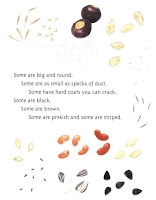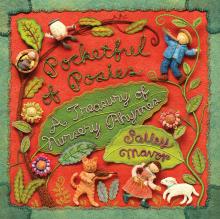Picture Books
Pamela Walks the Dog
My two reading-age children (ages 6 and 8) so enjoyed the punch line that they fought over who would be the first one to read the story to Daddy. As evidenced from the sticky fingerprints on every page, my younger children (ages 2 and 4) have been poring over the book as well. The story could be easily read by a younger reader who knows most of the phonograms (the story includes a few "challenging" words, such as "thought" and "would").
Paul Revere's Ride
Pele, King of Soccer / Pele, El rey del Futbol
This week I want to post about one of my country's heroes... Pele, King of Soccer.
Warm illustrations full of movement tell the story of the world's genius of soccer from his humble beginnings to his post professional carer as an ambassador for the world's most popular and well-loved sport.
I am naturally skeptical when picking up a book that has to do with my own origins: this colorful and friendly volume surpassed my expectations and took me back to my country inside its originally illustrated pages! A great choice for when you are doing an elementary school level unit study on Brazil and needing a picture book.
The book is bilingual and while I wish it were in Portuguese, Brazil's language, it will serve Spanish students well.
Philomena
Short chapter book with numerous black and white illustrations.
Piece = Part = Portion
There are lots of fraction books for kids out there with photos of every conceivable flavor of... Pizza. This book has the fractions, it has pizza, but thankfully it does not stop there! It provides a progression of various portions to a sliced—but intact—pizza representing the whole (1/1 = 1 = 100%). The connections it makes between the fractional part and its decimal and percentage representations is what makes it different, and useful. My kids have had a difficult time making this connection at home, perhaps because their own homeschool teacher suffers from the same ailment? In any event Piece = Part = Portion, as my husband happily agrees, does this job well.
One page shows one egg in a egg carton: the facing pages says "1/12 of a dozen eggs, .09, 8 %". The next pages shows a girl in a soccer uniform and ten other soccer shirts around her: "1/11 of a soccer team, .09, 9%". Clean, uncluttered pages, nice photos of everyday things, effective results: a good Math aid for your homeschool!
Pippo the Fool
I heard this story long ago... most certainly from my story-telling aunt, who had the power to do exactly what this phenomenal books does: to turn real life stories into a delightful tale for children! But while my good auntie illustrated her stories with words in a way only she could do, this new publication is illustrated by lines and color in a way that will captivate young and old alike. One would be reminded of Tomie De Paola, but a Tomie de Paola turned-to-life with much more realistic, rich-in-detail full page spreads.
The story is one of big dreams, inventiveness,  and great doses of courage and perseverance. Half a millennium ago in Florence, the great cathedral of Santa Maria del Fiore was all built, but for the dome... and a contest was announced for the building of an architectural feat never done before. Little Pippo, called the fool by the people, a goldsmith, dreamed of a plan... and had to undergo quite a bit to accomplish it!
and great doses of courage and perseverance. Half a millennium ago in Florence, the great cathedral of Santa Maria del Fiore was all built, but for the dome... and a contest was announced for the building of an architectural feat never done before. Little Pippo, called the fool by the people, a goldsmith, dreamed of a plan... and had to undergo quite a bit to accomplish it!
 Pictures books are such integral part of our family life... and books such as Pippo the Fool come to entertain, to educate and to delight. Hats off to writer and illustrator. Do not miss this gem!
Pictures books are such integral part of our family life... and books such as Pippo the Fool come to entertain, to educate and to delight. Hats off to writer and illustrator. Do not miss this gem!
Plant Secrets
I confess I have a stack of books here waiting... some about libraries under different themes. Alas, the warmth today brings our minds to travel towards a green world, full of sunshine and growth.

That, coupled with my 4th grader exclaiming, "Mom, you should blog about this nice book!" has me posting this gem found at the library under new books just yesterday! She is an avid picture book reader and her enthusiasm for this colorful, plant-full book alone is a thumbs up for me!
Product description:
Plants come in all shapes and sizes, but they go through the same stages as they grow. Using four common plants, young readers learn about a plant's life cycles. Simple text and colorful illustrations show the major phases of plant growth: seed, plant, flower, and fruit. Back matter offers more information on each plant, as well as on each stage of growth.
Planting the Trees of Kenya
When I was doing my research for this year's library tree project, I spent a bunch of time at a local bookstore, checking out great new children's titles. Easily my favorite (which it turns out the library had already purchased) was Planting the Trees of Kenya: The Story of Wangari Maathai by Claire A. Nivola.
It's a lovely true story about a lady from Kenya who won the Nobel Peace prize for helping her country recover its economic security by starting a movement to replant the trees and small farms and gardens that had helped the country prosper in the past, but that had been cut down to make way for larger commercial farming (which had devastated the economy).
The thing that had struck me about the book on this first read-through was the beautiful sense of order and dignity - the importance of stewardship of nature, the use of the people themselves as important resources in solving problems, the simplicity of remembering that one person can really make a substantial change, the need for perseverance even when things aren't easy right away. Basically: we change ourselves to change the world. It also has lovely small-is-beautiful and principle-of-subsidiarity sort of themes in it.
The thing I had forgotten was a detail about the years that Wangari had spent in America - where she went to college and majored in biology. I had completely forgotten that she went to a Catholic college (even though the campus picture is portrayed with nuns in habits walking around!). There is a lovely indication in the story that their philosophical influence had a significant impact on her story (and is of course an essential part of the story that her background in biology helped prepare her for her good work):
Her heart was filled with the beauty of her native Kenya when she left to attend a college run by Benedictine nuns in America, far, far from her home. There she studied biology, the science of living things. It was an inspiring time for Wangari. The students in America in those years dreamed of making the world better. The nuns, too, taught Wangari to think not just of herself but of the world beyond herself.
How eagerly she returned to Kenya! How full of hope and of all that she had learned!
The story (and the book) is SO right and so beautiful in so many ways. It's a book anyone could love.
The unexpected discovery I made when I read the "Author's Note" in the back of the book was that the college Wangari attended in the United States was Benedictine College in Atchison, Kansas!
Pocketful of Posies
The entire book was stitched and photographed, and it is one delightful page after another! Enjoy the book's page at the author's website as it offers many inside views plus this series of posts that show a lot of interesting photos on the making of the book, posted by the author!
The nursery rhymes include many old favorites from Mother Goose as well as some less-familiar ones, but it's the illustrations that absolutely steal the show! (Click on the cover image to get an idea.) Author and illustrator Salley Mavor apparently spent a decade developing and honing her trademark fabric relief technique before attempting to illustrate her first book. Each page is crafted from wool felt and sewn and embroidered with multicolored thread, with characters' faces painted on wooden beads. Mavor likes to make furniture and roofs from driftwood bits, and incorporates other found items such as acorn caps and shells into the pictures. She says that each scene takes nearly a month to complete!
The book's primary audience is preschoolers through grade 1 or so, but older children and adults will love the incredible artistry and attention to detail.
Review updated 26 Mar 2024 by Suchi Myjak.









